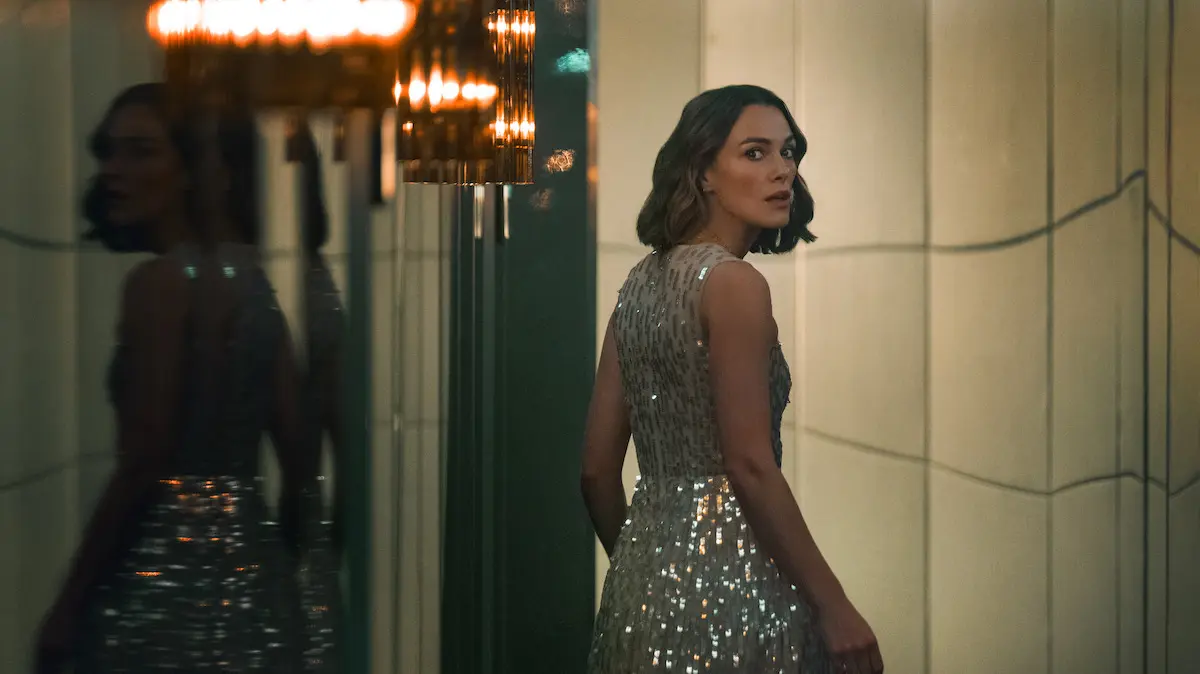The Woman in Cabin 10: Key Changes from Book to Movie
-

Ruth Ware’s bestselling thriller The Woman in Cabin 10 has finally made the leap from page to screen, with Keira Knightley leading Netflix’s glossy adaptation. Directed by Simon Stone, the film brings the claustrophobic mystery of the original novel to life — but as with many book-to-movie transitions, several major changes shift the tone, structure, and even the motivations behind its central mystery.
Here’s a deep dive into how The Woman in Cabin 10 differs from the novel and what those changes mean for the story.
What changed from page to screen
At first glance, Netflix’s The Woman in Cabin 10 stays faithful to Ruth Ware’s 2016 mystery. Laura “Lo” Blacklock (Keira Knightley), a journalist still reeling from trauma, boards the Aurora Borealis for what she assumes will be a straightforward travel assignment. But when she witnesses a woman being thrown overboard from the neighboring cabin, her dream cruise spirals into a waking nightmare.
The most significant shift between the book and film comes from Lo herself. In the novel, Lo is a travel writer suffering from anxiety and insomnia after a home invasion. She’s an unreliable narrator — the reader is never sure if what she saw was real. The Netflix adaptation eliminates that ambiguity. Director Simon Stone turned Lo into an investigative journalist with sharper instincts and a more defined moral compass. According to Stone, he wanted audiences to “agree completely with her,” steering away from gaslighting and toward a classic conspiracy thriller tone. This decision grounds the story in Lo’s determination rather than her doubt.
Another major change lies in the motives behind the murder. In Ware’s book, the relationship between billionaire Richard Bullmer and the woman impersonating his wife, Carrie, is primarily an affair gone wrong. The film abandons the romantic subplot and reframes the scheme as a fight over wealth and legacy. On screen, Bullmer murders his terminally ill wife, Anne, after discovering she intends to give away her fortune to charity. He then replaces her with Carrie, a woman discovered via facial recognition software, to pose as Anne and sign control of her estate back to him.
This shift not only modernizes the story — incorporating technology and gender commentary — but also reframes Bullmer as a symbol of patriarchal greed.
“It’s about the assumption that women are replaceable.That’s at the core of the film,” Stone explained in an interview with Tudum.
The adaptation also heightens the thriller elements. Lo’s encounters aboard the Aurora Borealis are more cinematic: she’s nearly drowned under a pool cover, drugged, and locked below deck before staging a desperate escape. In the book, much of Lo’s fear is psychological; in the movie, it’s physical and visceral, designed for visual tension and emotional payoff.
Ben, Lo’s ex-boyfriend and photographer on the cruise, also receives a more tragic arc. In the film, he sacrifices himself to help Lo escape, adding emotional weight to her survival. His death replaces the book’s quieter ending with a moment of redemption and loss — a hallmark of Netflix’s current thriller formula.
Finally, the climax takes place at a grand charity gala in Norway. In the book, the confrontation is smaller and more internal, centered around Lo’s desperate swim to safety. The film, however, stages a dramatic showdown in front of an audience, with Lo reading Anne’s original speech exposing Bullmer’s crimes while Carrie, posing as Anne, confirms the truth. Bullmer’s violent unraveling before the crowd delivers cinematic closure and moral justice that the novel leaves more ambiguous.
The Woman in Cabin 10 ending explained: Lo’s survival and Carrie’s redemption
The ending of The Woman in Cabin 10 ties its thriller mechanics and emotional arcs together in a satisfying way. After escaping the yacht with Ben’s help — and watching him die in the process — Lo makes it to shore, determined to expose Bullmer’s conspiracy. At the gala, she reveals the speech Anne had intended to give before her murder, outing Richard’s plot to steal his dying wife’s fortune. Carrie, still disguised as Anne, backs up Lo’s claims, forcing Bullmer into a panic.
Bullmer’s breakdown plays out like a modern gothic tragedy. In a fit of rage, he takes Carrie hostage, declaring she’s not the real Anne, only to be shot and disarmed by Anne’s bodyguard, Sigrid. Lo finally ends the cycle of violence by striking Bullmer down, ensuring that both women survive.
In the final scenes, Lo publishes her exposé, reclaiming her reputation and sense of purpose. She receives a message from Carrie, now living safely with her daughter — a moment of quiet redemption that mirrors Lo’s own emotional recovery. The movie closes with the northern lights shining above the sea, symbolizing clarity after chaos and hinting at new beginnings for both women.
While fans of the book may miss its subtle tension and ambiguity, the film’s emphasis on justice and survival gives the mystery a fresh edge. The Woman in Cabin 10 proves that even when the setting shifts from page to screen, its central message remains afloat — trust your instincts, even when no one else will.
TOPICS: The Woman in Cabin 10